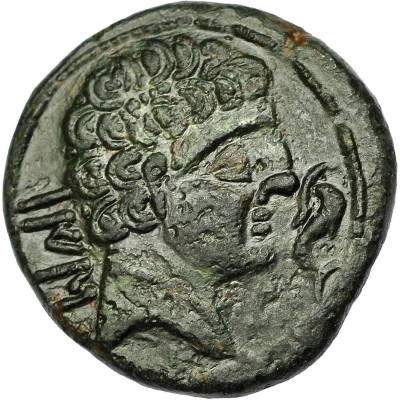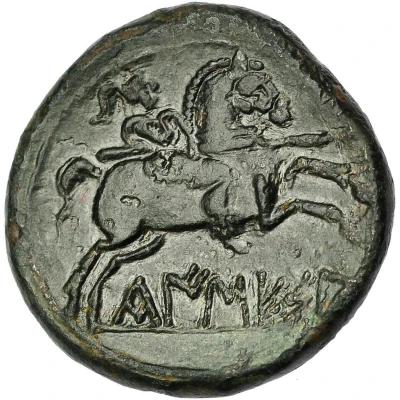


© Jesús Vico S.A.
Unit 150 BC - 101 BC
| Bronze | 11.5 g | 24.5 mm |
| Issuer | Kaisesa (Arevaci people) |
|---|---|
| Type | Standard circulation coin |
| Years | 150 BC - 101 BC |
| Value | 1 Unit |
| Currency | Unit (second half of the 2nd century BC) |
| Composition | Bronze |
| Weight | 11.5 g |
| Diameter | 24.5 mm |
| Shape | Round (irregular) |
| Technique | Hammered |
| Demonetized | Yes |
| Updated | 2024-10-10 |
| Numista | N#316421 |
|---|---|
| Rarity index | 95% |
Reverse
Rider advancing right, wearing helmet, holding spear.
Script: Iberian (Celtiberian)
Comment
Obverse inscription:"BaIS'" written from left to right in northeastern (Levantine) Iberian script.
Reverse inscription:
"KaIS'ESA''" written from left to right in northeastern (Levantine) Iberian script.
Interesting fact
The coin is quite interesting! One fascinating fact about it is that it was used as a form of currency during a time when the Arevaci people were transitioning from a bartering system to a monetary system. This coin, made of bronze and weighing 11.5 grams, was a standard unit of exchange and played a significant role in the early days of trade and commerce in the region.